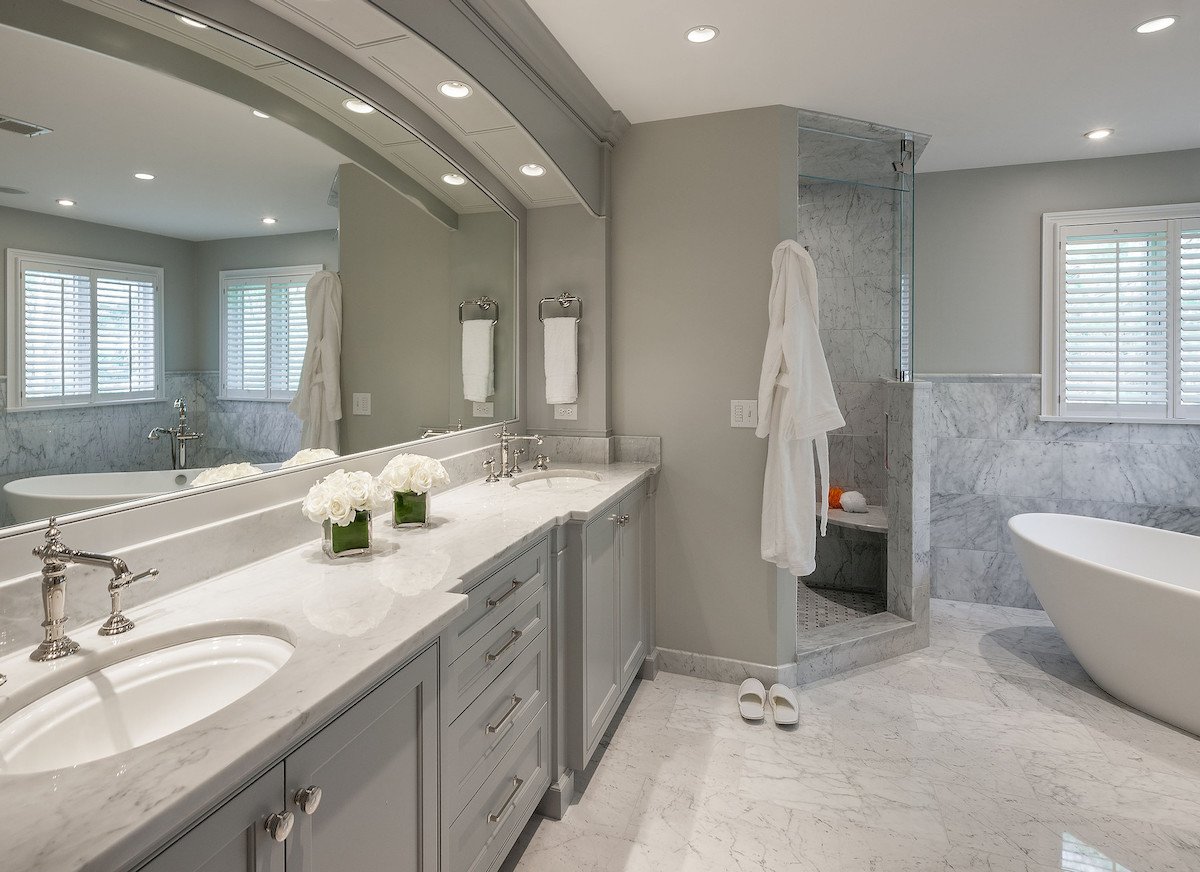Main homeowner tips for insurance-related home repairs you’ll want to know
Topic:
Home Maintenance
Dealing with a damaged home is no fun. Fallen trees, burst pipes, flooded basements, lightning strikes – they all can cause the kind of damage that makes a home difficult to live in and, in worst cases, unlivable. Then there’s the insurance issues. We’ve all heard horror stories – or experienced them ourselves – about getting reimbursed for insurance-related home repairs. And that’s the reason why we’re writing this post.
To be clear, your insurance company is there to help you and usually does. The challenge is often understanding what’s needed to accomplish your goal of fixing your home and navigating the process. That’s why it’s so important to reach out to your insurance agent or customer representative at the insurance company. You should know exactly what your coverage is and what needs to happen to process a claim as quickly and efficiently as possible.

As a home renovation contractor, our experience has taught us that the estimating tools used to assess repair costs often significantly underestimate the amount needed. They typically use a simple formula based on the linear footage of what needs to be replaced, ignoring the specific circumstances of the claim and some of the elements that may be involved in a proper repair. This problem can be compounded by the fact that most policies only cover the amount needed to fix the damage and not the underlying cause.
Examples of home insurance claims we have seen
One example of underestimating that we’ve seen involved the shower valve and steam unit in a master shower that leaked and created mold in the ceiling beneath. An insurance adjuster estimated the cost of replacing the replacement valve and the gutted bathroom, but not bringing the home back up to its original condition to meet code. The estimate covered only replacing what was removed. As a result, the contractor recommended by the insurance company underestimated the actual cost by $70,000 and declined to do the job. A reputable builder was brought in to provide an accurate estimate which the insurance company covered, replacing the bathroom and bringing the home to its original condition.
Another, example is a claim in which the heating system in a vacation home failed in the winter, causing pipes to freeze and burst. Water floods the home unchecked and it becomes a total loss. Not knowing the actual cost to return the home to its original condition, the homeowner fortunately chooses to work with a private adjuster to accurately determine the amount needed. For a 10-15% commission, the adjuster does a comprehensive assessment of the damage and replacement costs, providing the insurance company with an accurate estimate that covers the full cost of repair.

Both of these examples serve as cautionary tales. It’s always a good idea to get accurate quotes for repair work and submit them to the insurance company to get approval prior to beginning the work.
Here are some valuable tips to make your insurance related home repair experience as pain-free and efficient as possible:
- Get accurate pricing for repairs
Rule Number One: “ballpark estimates” will not work. The most effective way to address your loss is to get accurate pricing as soon as possible from a reputable contractor that covers the full scope-of-work for your specific job. Do not count on the insurance company to know what a reasonable cost is because of how their estimates are determined. They can miss critical elements and it’s in your best interest to get an expert estimate you can trust.
- Insurance companies won’t pay to fix the same problem twice
Make sure you work with a reputable and responsible contractor so that your repairs are done right the first time. Insurance companies will not pay to fix someone else’s mistakes.
- What is not covered by homeowner’s insurancez
As we discussed earlier, insurance companies will cover the cost of repairing damage, but they will not pay to fix the underlying cause or for preventative measures. For example, a policy will generally cover the damage caused by an ice dam, but it will not cover the cost of elective roof work to prevent ice dams. It pays to check your policy: if you live in a flood-prone area, you need additional flood insurance. The same goes for earthquakes.
- Prevent risks from happening
Having to deal with an insurance claim is a challenging experience so perform a regular maintenance review of your home to ensure all your systems are in good working order. Keeping up with regular maintenance can reduce the risk of a disruptive and potentially costly insurance claim.
The silver lining: damage repair presents an opportunity for improvement
Many damage claims present an opportunity to fix the problem in a way that provides improvement. Working with the right design/build team can result in replacement that gives you the space you really want.
When your home gets damaged, it can throw you for a loop. It’s important to stay calm, use a private adjuster if necessary, and get accurate quotes from reputable contractors that address the root problem of the damage and cover all costs.
Start by engaging with an experienced, attentive contractor you can trust. One that offers proactive, regular maintenance and expert assessments so that your home is always in top shape to minimize avoidable risks and you have peace-of-mind.
So why not make home preventative maintenance a priority for your home? Contact us today to schedule a complete home maintenance inspection and assessment to identify any potential problems and recommend effective, cost-efficient solutions that can save you unnecessary added expense down the road. To learn more about home maintenance, please download our FREE eBook - Home Maintenance: This is How Professionals Do It.
















Leave a comment